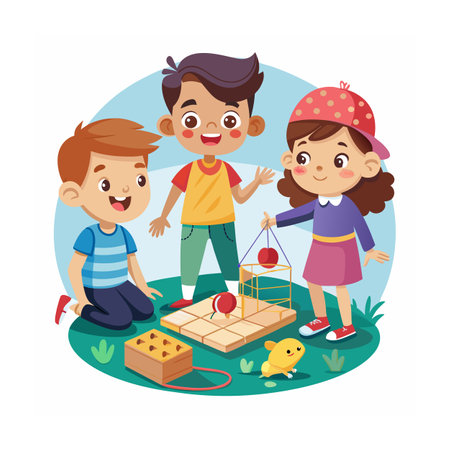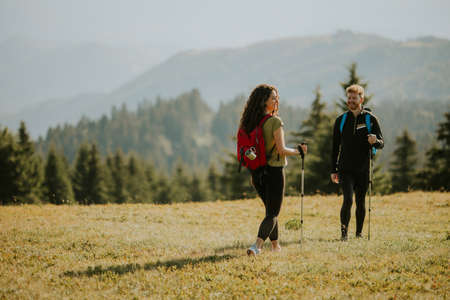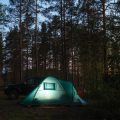1. Choose a Family-Friendly Campsite
When camping with young children, picking the right campsite is one of the most important steps to ensure everyones safety and comfort. Not all campgrounds are created equal, so its essential to choose one that caters to families and offers features designed with kids in mind.
Look for Kid-Safe Amenities
Family-friendly campgrounds often include amenities that make life easier for parents and safer for children. These might include:
| Amenity | Why Its Important |
|---|---|
| Flat Terrain | Easier for kids to walk around without tripping or falling |
| On-Site Restrooms | Convenient for potty training and late-night bathroom trips |
| Clean Water Access | Essential for hygiene, cooking, and drinking |
| Play Areas or Open Spaces | Safe zones where kids can play while staying within view |
Safety Features to Consider
In addition to family-friendly amenities, you’ll want to choose a campsite that includes safety features. These give peace of mind and help in case something unexpected happens.
| Safety Feature | Benefit |
|---|---|
| Proximity to Park Rangers or Emergency Services | Quick access to help in case of an emergency |
| Clearly Marked Trails and Camp Zones | Makes it easier for kids not to wander off or get lost |
| No Nearby Steep Cliffs or Water Bodies Without Barriers | Reduces risk of falls or accidental drowning |
Check Reviews and Ratings
Before making a reservation, read online reviews from other families who have stayed at the campground. Look for comments about cleanliness, staff helpfulness, and how safe other parents felt while staying there with their children.
Tip:
Avoid remote or primitive campsites when traveling with toddlers or preschoolers unless you’re fully prepared and experienced. Established campgrounds provide more structure and support, which makes your trip smoother and safer.
2. Teach Kids Basic Outdoor Safety
Before heading out on your camping trip, its important to go over basic outdoor safety rules with your children. This helps them feel more confident and prepared, while giving you peace of mind. Make sure the rules are easy to understand and repeat them a few times so kids can remember them during the trip.
Key Safety Rules Every Child Should Know
Here are some essential rules that every young camper should be familiar with before arriving at the campsite:
| Rule | Why Its Important |
|---|---|
| Stay within sight of adults | This helps prevent kids from wandering off or getting lost in unfamiliar surroundings. |
| Avoid touching or feeding wildlife | Wild animals can carry diseases or become aggressive if they feel threatened. |
| Learn to identify landmarks | Recognizing tents, trees, or signs can help kids find their way back if they get turned around. |
| Stick to marked trails | This reduces the risk of injuries or getting lost in dense forest areas. |
| Never eat plants or berries | Some plants look tasty but can be poisonous. Always check with an adult first. |
Practice Makes Perfect
Once youve gone over the rules at home, try practicing them before your trip. For example, take a walk in a nearby park and play a game where your child has to spot safe landmarks or stay within a certain distance from you. Making it fun helps kids learn faster without feeling overwhelmed.
Create a Family Safety Code Word
Come up with a special word or phrase that only your family knows. This can be used in case someone gets separated, making it easier for others to confirm identity and ensure everyone is safe.
Encourage Questions and Conversations
Let your kids know its okay to ask questions about what’s safe and what’s not. The more open the communication, the more likely they’ll speak up if something feels wrong during the trip.
By teaching these basic outdoor safety tips early on, youre setting your children up for a fun and secure camping experience where everyone feels confident exploring the great outdoors together.

3. Prepare a Kid-Friendly First Aid Kit
When camping with young children, having a well-stocked first aid kit designed specifically for their needs is crucial. Kids are naturally curious and full of energy, which means scrapes, bumps, and bug bites are almost guaranteed. A kid-friendly first aid kit helps you respond quickly and appropriately to minor injuries or health concerns while out in nature.
What to Include in Your Child-Specific First Aid Kit
While adult first aid kits cover the basics, childrens needs can be a bit different. Heres a list of must-have items tailored for young campers:
| Item | Purpose |
|---|---|
| Pediatric Pain Relievers (e.g., Childrens Tylenol or Motrin) | Helps manage fever or minor aches and pains |
| Fun Band-Aids with Cartoons or Characters | Makes treating small cuts more enjoyable and less scary |
| Antiseptic Wipes | Cleans wounds before applying bandages |
| Insect Repellent for Kids (DEET-free options) | Protects from mosquito bites and ticks in a gentle way |
| Childrens Allergy Medicine (like Benadryl) | Treats allergic reactions from food, insect stings, or plants |
| Sunscreen Safe for Kids (SPF 30+) | Prevents sunburn during outdoor activities |
| Tweezers | Useful for removing splinters or ticks |
| Thermometer | Helps monitor your child’s temperature if they feel unwell |
Extra Tips for Packing Your Kit:
- Use a waterproof container to keep supplies dry.
- Label each item so any adult can easily find what they need in an emergency.
- Check expiration dates before every trip.
- Add a small comfort item like stickers or a favorite character bandage to ease anxiety.
A little preparation goes a long way when it comes to keeping your family safe on your camping adventure. With the right tools on hand, youll be ready for whatever nature throws your way—giving you peace of mind and your kids the freedom to explore safely.
4. Practice Fire and Water Safety
When camping with young children, fire and water safety should always be a top priority. Kids are naturally curious, which makes campfires and lakes or rivers especially tempting. To keep everyone safe, its important to set clear boundaries and use safety tools whenever possible.
Fire Safety at the Campsite
Campfires are a big part of the camping experience, but they can be dangerous if not handled properly—especially with little ones around. Always build your fire in designated fire rings or pits provided by the campground. These help contain the flames and prevent them from spreading.
Fire Safety Guidelines
| Do | Dont |
|---|---|
| Use established fire rings or pits | Build fires on open ground or near trees |
| Keep a bucket of water nearby | Leave the fire unattended |
| Supervise kids closely around the fire | Let children play near the flames |
| Teach kids to stay at least 3 feet away | Toss trash or food into the fire |
You can also mark a “no-go” zone around the fire using rocks or sticks to help kids visually understand where it’s safe to stand.
Water Safety Tips
Lakes, rivers, and streams can be fun places for kids to explore, but they also come with risks. Even shallow water can be dangerous for young children. Always supervise your child when they’re near any body of water—even if they’re just splashing at the edge.
Basic Water Safety Measures
- Use life jackets: Make sure kids wear U.S. Coast Guard-approved life jackets anytime they’re near or in the water—even if they know how to swim.
- Create boundaries: Set limits on how far kids can go into the water and stick to shallow areas where you can keep close watch.
- No solo swims: Teach your children that they should never enter the water without an adult present.
If youre camping near fast-moving rivers or deep lakes, consider skipping water play altogether for younger kids. Its better to be overly cautious than risk an accident.
Simplifying safety rules and repeating them often helps children remember whats expected of them. Use gentle reminders and make it part of your daily routine while at camp.
5. Pack Proper Clothing and Gear
When camping with young kids, packing the right clothing and gear is essential for their safety and comfort. Weather in the great outdoors can change quickly, so it’s important to be prepared for all conditions.
Dress in Layers
Young children are more sensitive to temperature changes. Dressing them in layers makes it easy to adjust their clothing as the day warms up or cools down. Start with a moisture-wicking base layer, add an insulating layer like a fleece or hoodie, and top it off with a waterproof jacket if rain is expected.
Footwear Matters
Proper footwear helps prevent slips, falls, and sore feet. Avoid sandals or open-toed shoes on trails. Choose closed-toe hiking shoes or sturdy sneakers that offer good support and traction.
Recommended Footwear by Activity
| Activity | Recommended Footwear |
|---|---|
| Hiking Trails | Kids hiking boots or trail shoes |
| Campsite Play | Closed-toe sneakers |
| Water Activities | Water shoes with non-slip soles |
Protect from the Sun
A wide-brimmed hat or baseball cap can help protect your child’s face and neck from sunburn. Don’t forget sunglasses and kid-friendly sunscreen too!
Stay Visible at Night
Nights at campgrounds can get very dark. Equip each child with an easy-to-use flashlight or glow stick. These not only help them see but also make it easier for you to keep track of them after sunset.
Night Visibility Options
- Child-sized LED flashlights with wrist straps
- Glow sticks on lanyards around their necks
- Clip-on LED lights for jackets or backpacks
Packing smart means fewer worries during your trip and more time enjoying nature together as a family.
6. Establish Campsite Rules and Routines
When camping with young children, having clear campsite rules and daily routines can make a big difference in keeping everyone safe and happy. Kids thrive on structure, especially in new environments like the outdoors. By setting simple expectations early on, you help prevent confusion and accidents.
Set Up a Safe Zone
Designate a specific area in your campsite where kids can play freely and safely while being easily supervised. This space should be away from hazards like campfires, cooking gear, or water sources. Mark the boundaries using cones, flags, or natural features like logs or rocks.
Use a Buddy System
Pair children with a sibling or friend so they are never alone. This encourages teamwork and ensures that if one child gets into trouble, the other can alert an adult right away.
Plan Regular Group Check-Ins
Schedule short check-in times throughout the day where everyone gathers at a central spot to touch base. This helps keep track of all campers and reinforces a sense of community and responsibility.
Sample Daily Routine for Families
| Time | Activity | Safety Tip |
|---|---|---|
| 7:30 AM | Wake up & breakfast | Remind kids not to touch cooking equipment without help |
| 9:00 AM | Morning hike or nature activity | Use buddy system; carry water and basic first aid kit |
| 12:00 PM | Lunch & rest time | Check for ticks after outdoor activities |
| 3:00 PM | Group check-in & snacks | Head count and review of safety rules |
| 5:30 PM | Dinner prep & family time | Keep kids out of the cooking zone unless supervised |
| 8:00 PM | Campfire stories & bedtime routine | No running near the fire; use flashlights when walking at night |
Create Kid-Friendly Rules Together
Sit down with your children before or during the trip to create a few easy-to-follow safety rules together. When kids help make the rules, they’re more likely to follow them. Keep rules short and positive—for example:
- “Stay where we can see each other.”
- “Always have your buddy with you.”
- “Ask before going anywhere.”
- “No playing near the fire.”
Make It Fun!
You can turn these safety routines into games or songs to help younger kids remember them. For instance, make a song about checking in as a group, or give out “Safety Star” rewards at the end of each day for kids who followed the rules well.
The key is consistency. With clear expectations and regular routines, your family camping experience will be not only safer but more enjoyable for everyone.


